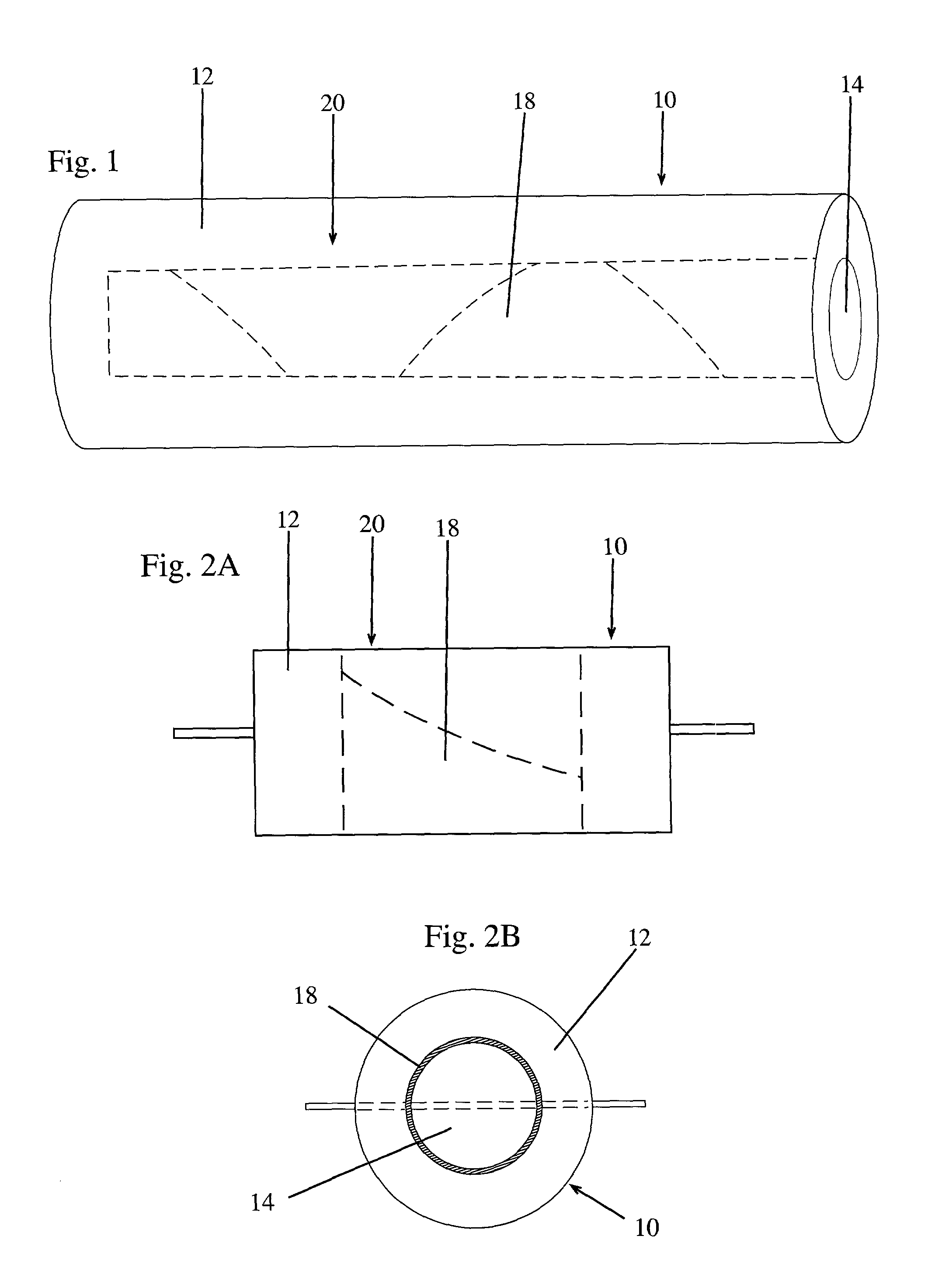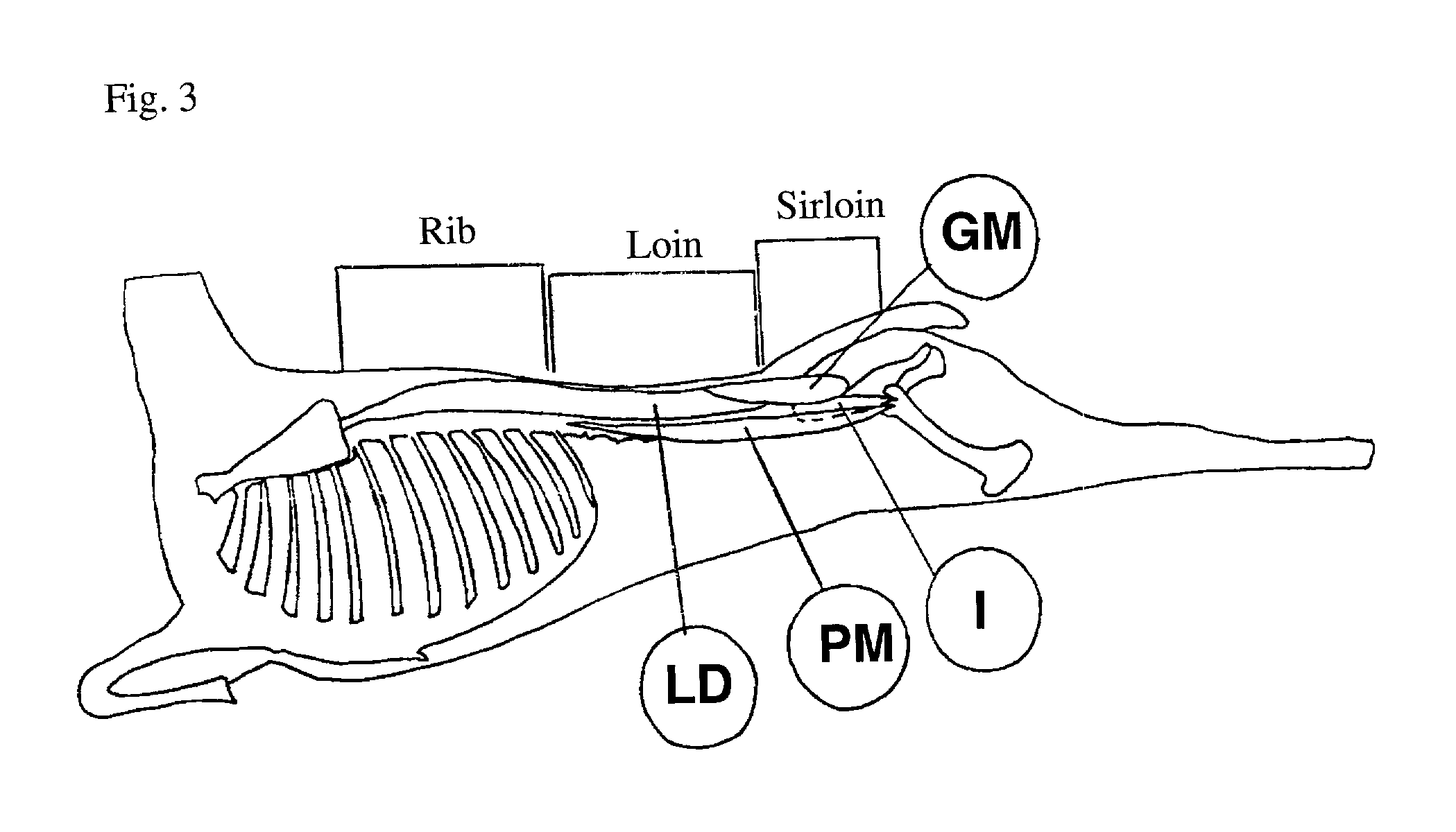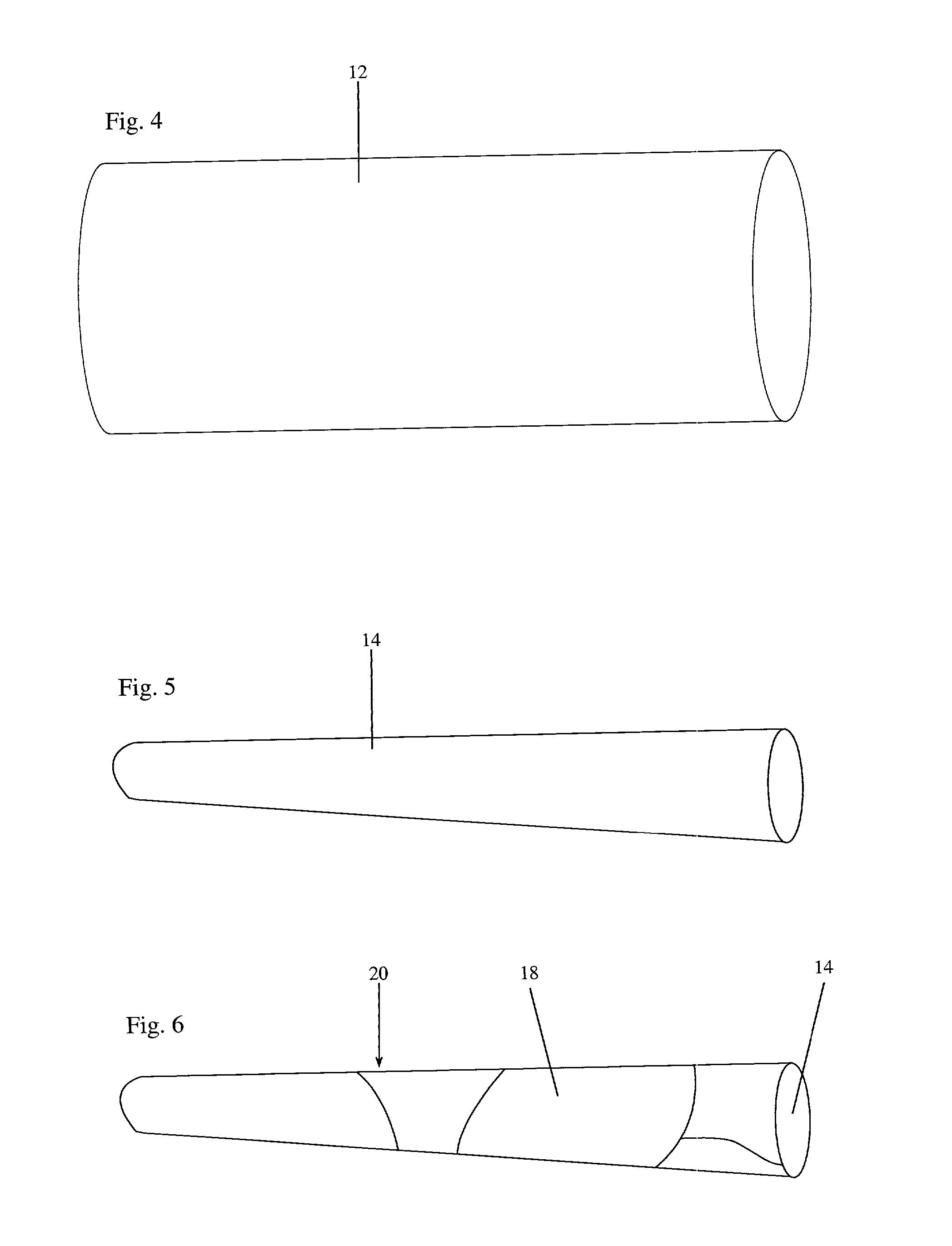Coaxially combined meat roast with steaks or chops cut from same
a meat roast and coaxial technology, applied in the field of meat roasts, can solve the problems of inability to solve the problem of spinal bones, method failure, and lack of visual appeal of cuts
- Summary
- Abstract
- Description
- Claims
- Application Information
AI Technical Summary
Problems solved by technology
Method used
Image
Examples
Embodiment Construction
[0035] Two alternate embodiments of the present invention are shown in FIGS. 9 and 10. In FIG. 9 there is shown a coaxially combined roast 22 similar to that of the previous embodiment in which the tenderloin 14 has no vegetable over-lay. Another embodiment of the present invention as shown in FIG. 10 is a coaxially combined meat roast 24 in which a rib sectrion 25 encases as a core element a vegetably veneered tenderloin 20. As some diners enjoy the rib bone in place on sliced roasts or racks, steaks or chops, the addition of the tenderloin with the concentric vegetable ring would give a similar appeal to those cuts.
[0036] Another alternate embodiment of the present invention is shown in FIGS. 11 and 12. FIG. 11 shows the narrowing end portion 26 of a food muscle such as the hip or chuck end of a longissimus dorsi or the lumbar end of a psoas major, the tip end thereof 28 having been removed and crust frozen, enrobed with vegtetable material 18 and lubricated with an edible lubrica...
PUM
 Login to View More
Login to View More Abstract
Description
Claims
Application Information
 Login to View More
Login to View More - R&D
- Intellectual Property
- Life Sciences
- Materials
- Tech Scout
- Unparalleled Data Quality
- Higher Quality Content
- 60% Fewer Hallucinations
Browse by: Latest US Patents, China's latest patents, Technical Efficacy Thesaurus, Application Domain, Technology Topic, Popular Technical Reports.
© 2025 PatSnap. All rights reserved.Legal|Privacy policy|Modern Slavery Act Transparency Statement|Sitemap|About US| Contact US: help@patsnap.com



